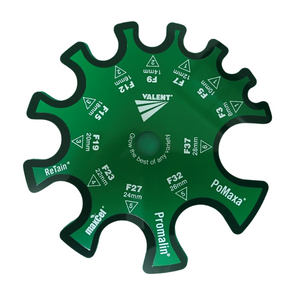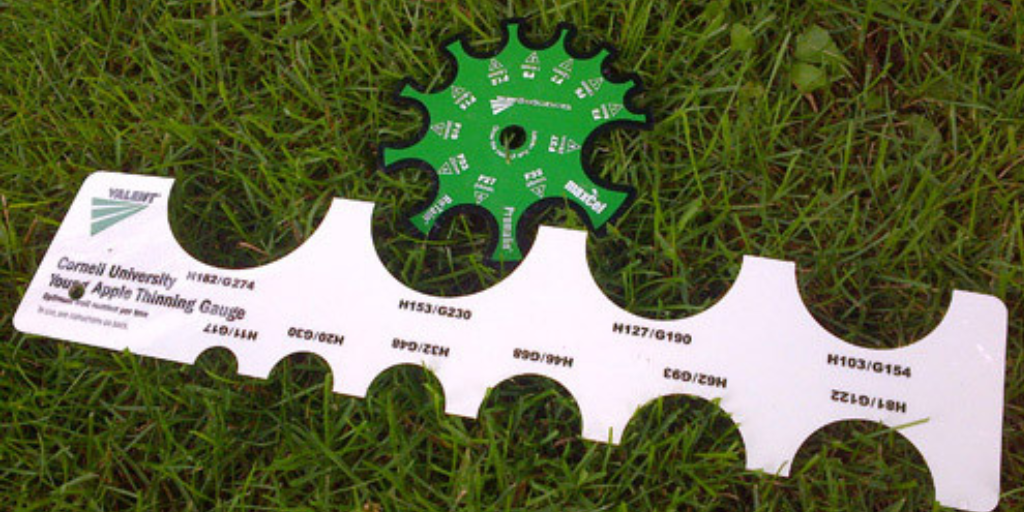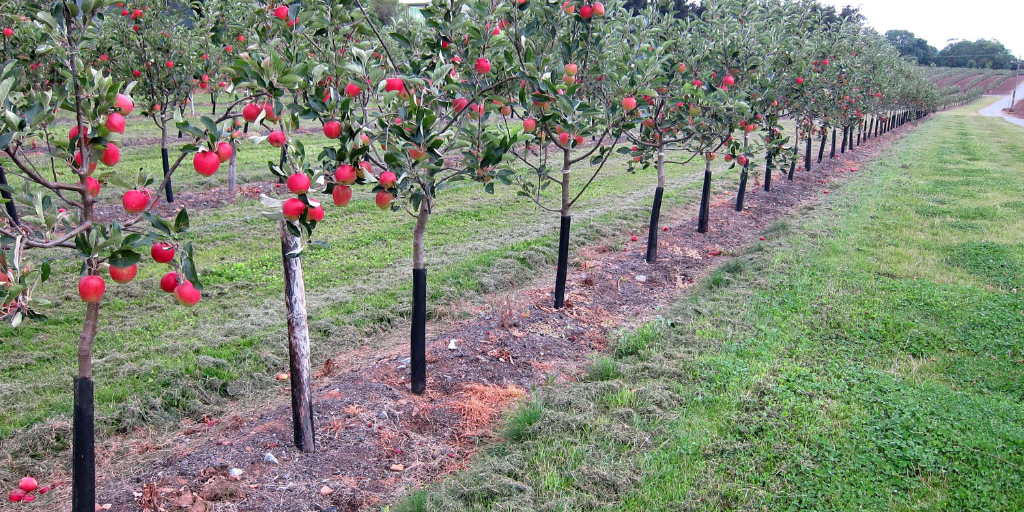Over the last few weeks, we’ve taken a look at crop load management, from the basics to the scientific models behind the development of precision crop load growth calculations. While crop load management is one of the most difficult aspects of growing, it is without a doubt a critical step in planning and maximizing yield and profit. In the third installment in our series on precision crop load management, we’re highlighting some of the tools and decision aids growers can use when hand thinning in the orchard.
Hand thinning is a process of manually removing excess fruit to create enough space for the remaining fruit to mature into high-quality produce. Hand thinning is a critical component of crop load management in orchards, especially for fruit that cannot be thinned chemically like peaches and other tender fruit.
Traditionally, hand thinning requires a skilled workforce that can precisely identify which fruit to remove and which to leave. It involves removing fruitlets or small fruits that are underdeveloped, misshapen, damaged, or otherwise not ideal for harvest. Hand thinning ensures that the remaining fruit has enough space to grow and mature, which can improve fruit quality and size. In precision crop load management, hand thinning is a key component in managing yield and quality of harvested fruit.
But how much space does a developing fruit need? And how many fruits can a single tree support? To help workers with hand-thinning decisions, there are tools available that can take into account the size of branches, the circumference of the trunk, and the space between individual fruits to provide recommendations on how to thin.
“Eyeballing it” and “the Rule of Thumb”
Though not exactly “precision” agriculture, the fact is that many growers just rely on simple rules and tried and true methods to manage their crop load. In cases where growers don’t have access to a gauging or trunk circumference tool, common sense and experience guide hand thinning - but there are still a few rules growers stick to.
Keeping in mind that the goal of hand thinning is to ensure that each fruit has room to grow, the “rule of thumb” provides a quick and easy guide to giving each fruit space to grow to the ideal size. To measure with the rule of thumb, simply make a fist, extend the thumb and pinky fingers, and thin to allow that much space between each fruit. While this rule provides a simple solution, it isn’t suited maximizing crop load, and many growers find that compared to using a gauge guide the rule of thumb may lead to over-thinning.
Equilifruit disk or MAFCOT Wheel
The equilifruit disc or MAFCOT wheel is a precision agriculture tool developed by the National Institute for Agricultural Research (INRA) in France. It can be used to inform and set a thinning strategy or as a decision aid for employees in the field. The disc has two main uses, as a hand-held reference for spur extinction pruning, and as a hand-thinning gauge.
The round disc has 11 notches of varying diameters from 8mm to 28mm which are used to measure the tree’s branches. Each notch has three corresponding numbers: the diameter in millimeters of the limb; the F value indicating the number of fruit/buds to leave on the limb; and the delta number (in the triangle) indicating the plus/minus range from the F-value. This delta value provides a little bit of flexibility for growers to use their own judgment based on the age of a tree, or a previous year’s yield.

Cornell Young Apple Thinning Gauge
The Valent/Cornell Young Apple Thinning Gauge is a similar tool designed for young trees. This tool uses the larger notches to measure the trunk cross-sectional area:

Measuring the trunk about a foot off the ground, the notches correspond to the recommended number of fruit or buds that should be left on the tree for ideal size and quality. The Cornell Gauge shows recommendations for both annual and alternate bearing varieties.
Conclusion
Even with these tools, hand thinning is a daunting task for many tree fruit growers, and a labor-intensive one. In fact, hand thinning is considered one of the most labor-intensive and time-consuming aspects of orchard management, especially in fruits that cannot be chemically thinned in advance. Tools like the equilifruit disc can help less experienced workers make more informed decisions in the orchard, and guide crew leaders in providing feedback. With Croptracker, you can record production practices like pruning and thinning even down to the tree level. A clear understanding of the costs of labor, combined with a crop load strategy to maximize yield and quality are the first steps to a precision operation that is sustainable and profitable.
Croptracker develops agtech solutions for industry leaders. Located in Eastern Ontario, Canada, our mission is to make crop production safer, more efficient, and more profitable. Designed in partnership with fresh market producers and distributors, every tool we create is based on direct industry feedback. Croptracker’s award-winning farm software optimizes recordkeeping, labor tracking, production and cost management. Our integrative Harvest Quality Vision technology offers instant empirical analysis of crop samples exactly when you need it. Optimize your harvest season with Croptracker’s customizable solutions. Visit Croptracker.com to learn more about our products and to contact us about app based solutions.


